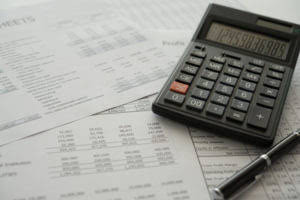CHI TIẾT SẢN PHẨM
Thus, they assess a company’s loss-making or poor-performing stocks or shares to offset the lower returns. Consequently, they divert their money to acquire other high-yielding shares or investments to offset the lower returns. For example, if a company builds a new factory, the CapEx would be the cost of buying the land, building, and equipment. The capital cost would be the CapEx plus the cost of obtaining permits, hiring contractors, paying interest on loans, and testing the factory before it starts operating.
Contents
Q. How do companies finance CapEx?
The term “capital” refers to the long-term investment in an enterprise, as opposed to the operating expenses incurred to keep it running on a day-to-day basis. Capital expenditures play a pivotal role in a company’s free cash flow (FCF) and valuation. FCF represents the cash generated by a company’s core operations after deducting both operating Certified Public Accountant expenses and capital expenditures.
The Maintenance CapEx Equation
If you want to request a wider IP range, first request access for your current IP, and then use the “Site Feedback” button found in the lower left-hand side to make the request. The risk-free rate (rf) is the yield capital costs definition on the 10-year Treasury as of the present date. A valuation is performed on a forward-looking basis, so using the current values per the open markets aligns more closely with the underlying objective.
- It takes into consideration the proportion of debt and equity in the company’s capital structure.
- Capital expenditures (CapEx) involve major, long-term investments like equipment or buildings, offering benefits beyond the current year and typically appearing on the balance sheet.
- In the direct approach, an analyst must add up all of the individual items that make up the total expenditures, using a schedule or accounting software.
- Let’s say ABC Company had $7.46 billion in capital expenditures for the fiscal year compared to XYZ Corporation which purchased PP&E worth $1.25 billion for the same fiscal year.
- It recorded $43.7 billion of property, plant, and equipment of this amount, net of accumulated depreciation.
Example of Capital and Revenue Expenditures
Capital expenditures and revenue expenditures refer to money spent by companies to keep their day-to-day operations going. But there are some differences between these two, including how they’re used—whether that’s to make purchases for the short or long term. The weighted average cost of capital (WACC) is the blended required rate of return, representative of all stakeholders.
Understanding Capital Cost: Definition, Calculation, And Importance
- Capital expenditures and revenue expenditures refer to money spent by companies to keep their day-to-day operations going.
- By understanding these costs, you can make better informed decisions when it comes to growing your business.
- Common methods include loans from financial institutions, investment from venture capitalists, and personal savings.
- To buy a new asset or add value to an existing asset that will last for more than one tax year, a business must spend money, use collateral, or take on debt.
- Capital expenditures are less predictable than operating expenses that recur consistently from year to year.
Examples of OpEx include costs like utilities, laptops, and employee salaries, and rent. Whereas examples of CapEx include property, plants, manufacturing equipment, and furniture. Now, it is important to understand the difference between Capital Expenditure and Operational Expenditure.
- Careful management of capital costs supports sustainable growth and long-term profitability.
- The importance of capitalizing costs is that a company can get a clearer picture of the total amount of capital that has been deployed on assets.
- The cash flow from operations for ABC Company and XYZ Corporation for the fiscal year was $14.51 billion and $6.88 billion respectively.
- The most common method is the straight-line method, meaning the asset’s cost is spread evenly over its useful life.
- Capitalization is used when an item is expected to be consumed over a long period of time, typically more than one year.
- This depreciation expense is recorded on the income statement and reduces the asset’s value on the balance sheet over time.
The purchases or cash outflows for capital expenditures are shown in the investing section of the cash flow statement (CFS). When a company buys equipment, for example, they must show the cash outflow on their CFS. In addition, the https://dev-sciyahlearn.pantheonsite.io/2025/06/26/stale-dated-check-expired-check-returned-check-and/ equipment must also be recorded within total assets on the balance sheet.
Types of Capital Expenditures
Since long-term assets provide income-generating value for a company for a period of years, companies are not allowed to deduct the full cost of the asset in the year the expense is incurred. Instead, they must recover the cost through year-by-year depreciation over the useful life of the asset. Capital expenditures (CapEx) are costs that often yield long-term benefits to a company. OpEx is usually classified as costs that will yield benefits to a company within the next 12 months but do not extend beyond that. The weighted average cost of capital (WACC) is the rate of return that reflects a company’s risk-return profile, where each source of capital is proportionately weighted. The cost of capital is analyzed to determine the investment opportunities that present the highest potential return for a given level of risk, or the lowest risk for a set rate of return.
Is cost of capital the same as wacc?
Join 20,000 other strategy and operations professionals to get the weekly OpsJobs newsletter, sharing the latest job opportunities, exclusive events, and other useful resources. Companies can use expense management automation to help keep track of certain spending, including business travel. J.B. Maverick is an active trader, commodity futures broker, and stock market analyst 17+ years of experience, in addition to 10+ years of experience as a finance writer and book editor. Capital cost refers to the total cost needed to bring a project to a commercially operable status. Barring unusual circumstances, the market value of debt seldom deviates too far from the book value of debt, unlike the market value of equity. Investment-grade debt is deemed to carry less credit risk and the borrower is at a lower risk of default; hence the designation of a higher credit rating.









Bình luận